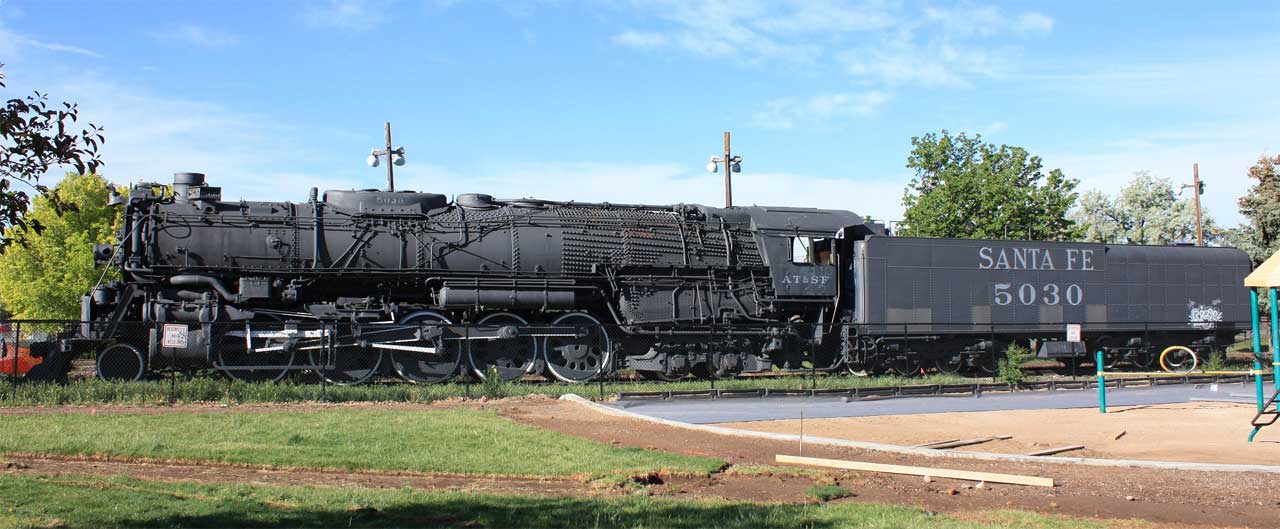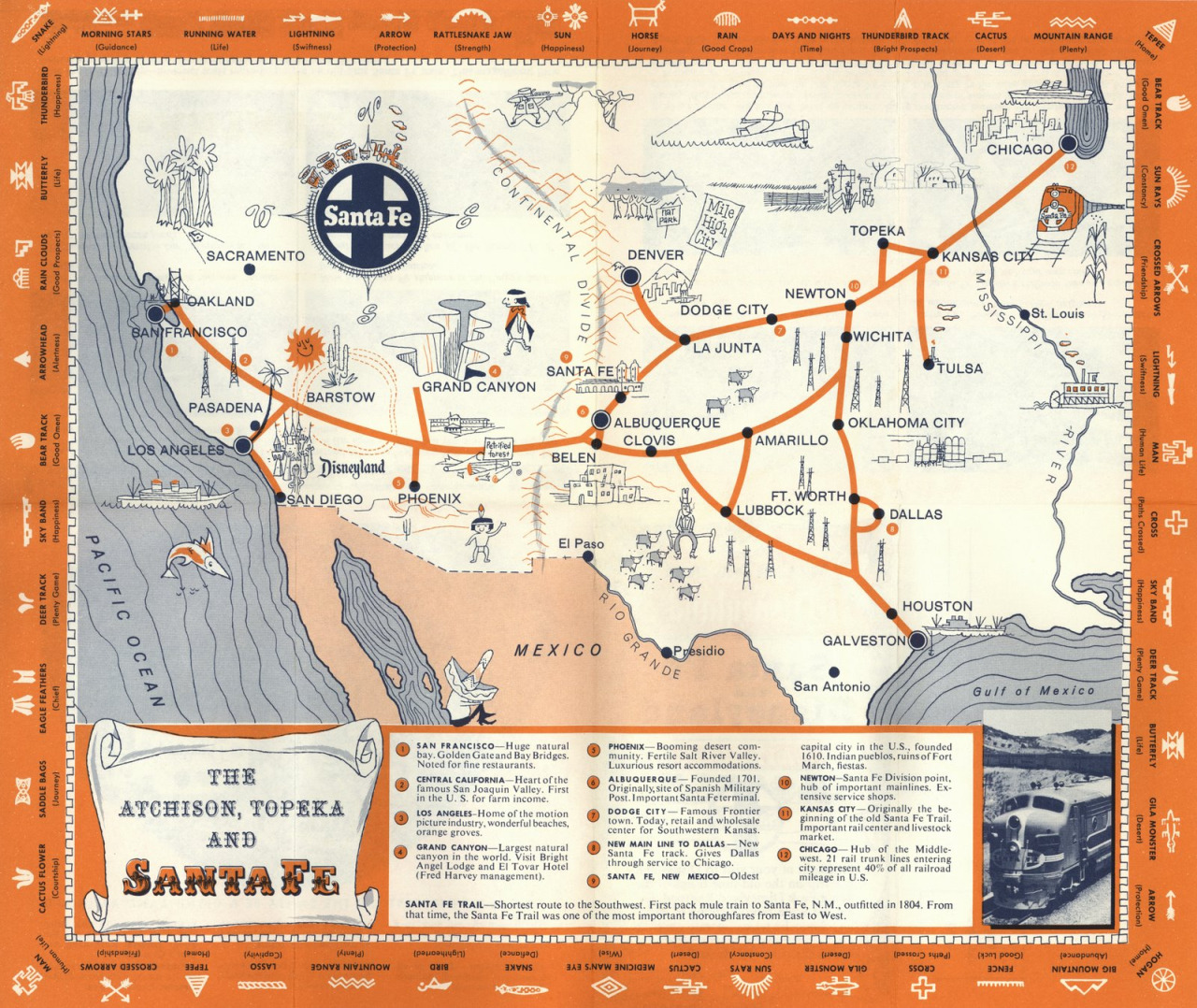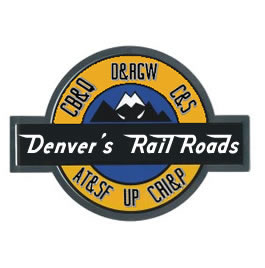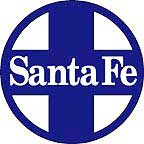Summary
The Atchison, Topeka and Santa Fe Railway was chartered on February 11, 1859, to join Atchison and Topeka, Kansas, with Santa Fe, New Mexico. Much of its early revenue came from wheat grown in Kansas and from cattle driven north from Texas to Wichita and Dodge City. Rather than turn its survey southward at Dodge City, AT&SF headed southwest over Raton Pass because of coal deposits near Trinidad, Colorado and Raton, New Mexico. Santa Fe built its own line to Denver, reaching there on Oct. 1, 1887. The first Joint Line Contract was signed between C&S and the ATSF on April 1, 1900, giving the district its new Joint Line name. Due to competitive rivalries the D&RG was not a part of the "Joint Line" agreement. During World War I, America's railroads were taken over by the United States Railroad Administration. The USRA decided there should be one track for northward trains, one track for southward trains. AT&SF reached Albuquerque in 1880; Santa Fe, the original destination of the railroad, found itself on a short branch from Lamy, New Mexico. In March 1881 AT&SF connected with the Southern Pacific (SP) at Deming, New Mexico, forming the second transcontinental rail route. The railroad then built southwest from Benson, Arizona, to Nogales on the Mexican border where it connected with the Sonora Railway, which the AT&SF had built north from the Mexican port of Guaymas.

AT&SF #5030 2-10-4 "Texas" Locomotive at Salvador Perez Park, Santa Fe, NM. Picture Source: steamlocomotive.com.
Early History in Kansas
At the center of the nation, Kansas served as a crossroads to the West. Trails traversed the area even before the Santa Fe Trail commerce route opened in 1821. The trails gave way to the state's railroads. Cyrus K. Holliday is credited with inaugurating the Santa Fe railroad system when he wrote the charter. Since Kansas Territory had no general incorporation laws, it was necessary to obtain charter authorization through an act of the territorial legislature. On February 11, 1859, the Kansas Territorial Legislature created the Santa Fe Railway. The charter provided that the company be incorporated under the name of the Atchison and Topeka Railway Company. A severe drought in 1860 and the outbreak of the Civil War the next year prevented any progress toward actual construction.
The company remained almost in hibernation for two years until congressional aid was obtained in 1863. A land grant bill was signed by President Abraham Lincoln on March 3, 1863, providing the company would be given every alternate section of land, designated by odd numbers, 10 sections in width on each side of its roads and branches. The sale of these lands would provide necessary operating capital. The act also stipulated that the line from Atchison to the Kansas-Colorado line would be completed and in operation by March 3, 1873.
The name of the company was changed by a vote of the stockholders on November 23, 1863, to the Atchison, Topeka & Santa Fe Railway Company. A short time later several changes were made in the Santa Fe's administration. Because the Civil War was still raging, little could be accomplished except to keep the organization intact. Even after the war's end, the problem remained in finding investors willing to finance initial construction and progress was slow.
After several setbacks in attempting to find a construction company, the first spade full of earth was turned marking the beginning of construction of the Santa Fe railroad, on October 30, 1868. Chief participant in the ceremony that took place in Topeka was Senator Edmund G. Ross, also in the crowd of about 20 persons was Cyrus K. Holliday.
By early spring 1869 the tracklayers were moving rapidly westward and in April the first excursion was made over the new line, from Topeka to Wakarusa. On September 18 the sight of the iron horse was seen in Burlingame.
The race toward the state's western border was now at full speed. In July 1870 the train reached Emporia and on July 17, 1871, the first train arrived in Newton. On June 8, 1872, Hutchinson was considered the end of the track, but construction crews moved on, reaching Dodge City in September. All that remained to be conquered was a hundred miles or more of flat prairie land. Finally, in spite of human predators, bad weather, tight money, long supply lines, a surveyor's error, and innumerable other complications, the tracks of the Atchison, Topeka & Santa Fe reached the true state line and five miles beyond on December 28, 1872, right on schedule.
Construction of the road's eastern extension began during autumn 1871, and despite some adversity, the connection between Topeka and Atchison was completed by May 16, 1872. In order to stimulate settlement on its Kansas lands, the Santa Fe railroad offered free or reduced rate transportation to potential buyers. Many settlers on railroad land, especially those from overseas, could bring all of their household goods at the company's expense.

The Santa Fe often furnished special cars. Celebrities, especially politicians like Teddy Roosevelt, caused a sensation when their special trains stopped in a community for them to speak to the gathering crowd.
History

Atchison, Topeka & Santa Fe Railway
The AT&SF reached Albuquerque in 1880; Santa Fe, the original
destination of the railroad, found itself on a short branch from Lamy,
New Mexico. In March 1881 AT&SF connected with the Southern Pacific (SP)
at Deming, New Mexico, forming the second transcontinental rail route.
The railroad then built southwest from Benson, Arizona, to Nogales on
the Mexican border where it connected with the Sonora Railway, which the
AT&SF had built north from the Mexican port of Guaymas.
Atlantic and Pacific Railway
The Atlantic & Pacific Railroad (A&P) was chartered in 1866 to build
west from Springfield, Missouri, along the 35th parallel of latitude
(approximately through Amarillo, Texas, and Albuquerque, New Mexico) to
a junction with SP at the Colorado River. The infant A&P had no rail
connections. The line that was to become the St. Louis–San Francisco
Railway (Frisco) would not reach Springfield for another four years, and
SP did not build east from Mojave to the Colorado River until 1883. A&P
started construction in 1868, built southwest into what would become
Oklahoma, and promptly entered receivership.
In 1879 A&P struck a
deal with the Santa Fe and Frisco railroads to construct a rail line for
each. The railroads would jointly build and own the A&P railroad west of
Albuquerque. In 1883 A&P reached Needles, California, where it connected
with an SP line. A&P also built a line between Tulsa, Oklahoma and St.
Louis, Missouri for the Frisco, but the Tulsa-Albuquerque portion
remained unbuilt.
Expansion
The Santa Fe began to expand: a line from Barstow, California, to San Diego in 1885 and to Los Angeles in 1887; control of the Gulf, Colorado & Santa Fe Railway (Galveston-Fort Worth) in 1886 and a line between Wichita and Fort Worth in 1887; lines from Kansas City to Chicago, from Kiowa, Kansas to Amarillo, and from Pueblo to Denver (paralleling the D&RGW) in 1888; and purchase of the Frisco and the Colorado Midland Railway in 1890. By January 1890, the entire system consisted of some 7,500 miles of track.
The Panic of 1893 had the same effect on the AT&SF that it had on many
other railroads; financial problems and subsequent reorganization. In
1895 AT&SF sold the Frisco and the Colorado Midland and wrote off the
losses, but it still retained control of the A&P.
The Santa Fe
Railway still wanted to reach California on its own rails (it leased the
SP line from Needles to Barstow), and the state of California eagerly
courted the railroad to break SP's monopoly. In 1897 the railroad traded
the Sonora Railway of Mexico to SP for their line between Needles and
Barstow, giving AT&SF its own line from Chicago to the Pacific coast. It
was unique in that regard until the Milwaukee Road completed its
extension to Puget Sound in 1909.
Subsequent expansion of the
Santa Fe Railway encompassed lines from Amarillo to Pecos (1899); Ash
Fork, Arizona to Phoenix (1901); Williams, Arizona to the Grand Canyon
(1901); the Belen Cutoff from the Pecos line at Texico to Isleta Pueblo,
New Mexico, south of Albuquerque, bypassing the grades of Raton Pass
(1907); and the Coleman Cutoff, from Texico to Coleman, Texas, near
Brownwood (1912).
In 1907, AT&SF and SP jointly formed the
Northwestern Pacific Railroad (NWP), which took over several short
railroads and built new lines connecting them to form a route from San
Francisco north to Eureka, California. In 1928, Santa Fe sold its half
of NWP to SP. In addition, Santa Fe purchased the U.S. portion of the
Kansas City, Mexico & Orient Railway (the Mexican portion of the line
became the Chihuahua-Pacific Railway, now part of National Railways of
Mexico).
Because long stretches of its main line traverse areas
without water, Santa Fe was one of the first buyers of diesel
locomotives for freight service. The railroad was known for its
passenger trains, notably the Chicago-Los Angeles El Capitan and Super
Chief (currently operated as Amtrak's Southwest Chief), and for the
on-line eating houses and dining cars that were operated by Fred Harvey.
Several of these Harvey Houses survive - most notably the El Tovar,
which is positioned right alongside the Grand Canyon.
On March
29, 1955, the railway was one of many companies that sponsored
attractions in Disneyland with its 5-year sponsorship of all Disneyland
trains and stations (see above map).
Post-World War II
construction projects included an entrance to Dallas from the north, and
relocation of the main line across northern Arizona, between Seligman
and Williams. In 1960, AT&SF bought the Toledo, Peoria & Western
Railroad (TP&W), then sold a half interest to the Pennsylvania Railroad
(PRR). TP&W cut straight east across Illinois from near Fort Madison,
Iowa, to a connection with PRR at Effner, Indiana, forming a bypass
around Chicago for traffic moving between the two lines. The TP&W route
did not mesh with the traffic pattern PRR successor Conrail developed
after 1976, so AT&SF bought back the other half, merged with TP&W in
1983, then sold it back into independence in 1989.
Southern Pacific merger
AT&SF began to propose a merger in the early 1980s. The Southern Pacific
Santa Fe Railroad (SPSF) was a proposed merger between the parent
companies of the Southern Pacific and AT&SF announced on December 23,
1983. As part of the joining of the two firms, all rail and non-rail
assets owned by Santa Fe Industries and the Southern Pacific
Transportation Company were placed under the control of a holding
company, the Santa Fe–Southern Pacific Corporation. The merger was
subsequently denied by the Interstate Commerce Commission (ICC) on the
basis that it would create too many duplicate routes.
The
companies were so confident that the merger would be approved they began
repainting locomotives and non-revenue rolling stock in a new unified
paint scheme. After the ICC's denial, railfans joked that SPSF really
stood for "Shouldn't Paint So Fast." While Southern Pacific was sold
off, all of the California real estate holdings were consolidated in a
new company, Catellus Development Corporation, making it the state's
largest private landowner. Some time later, Catellus would purchase the
Union Pacific Railroad's interest in the Los Angeles Union Passenger
Terminal (LAUPT). After SP's sale, SPSF is renamed to Santa Fe Pacific
Corporation, the holding company of AT&SF.
Burlington Northern merger
On September 22, 1995, AT&SF merged with Burlington Northern Railroad to form the Burlington Northern & Santa Fe Railway (BNSF). Some of the challenges resulting from the joining of the two companies included the establishment of a common dispatching system, the unionization of AT&SF's non-union dispatchers, and incorporating AT&SF's train identification codes throughout. The two lines maintained separate operations until December 31, 1996 when it officially became BNSF.
Related Reading:
Santa Fe 1940-1971 In Color - Vol. 3: Albuquerque—Los Angeles (1993)
Santa Fe . . . Steel Rails Through California (1963)
ATSF Color Guide to Freight and Passenger Equipment (1995)
© Copyright 2012-2022. Dennis N Turner. All Rights Reserved.


